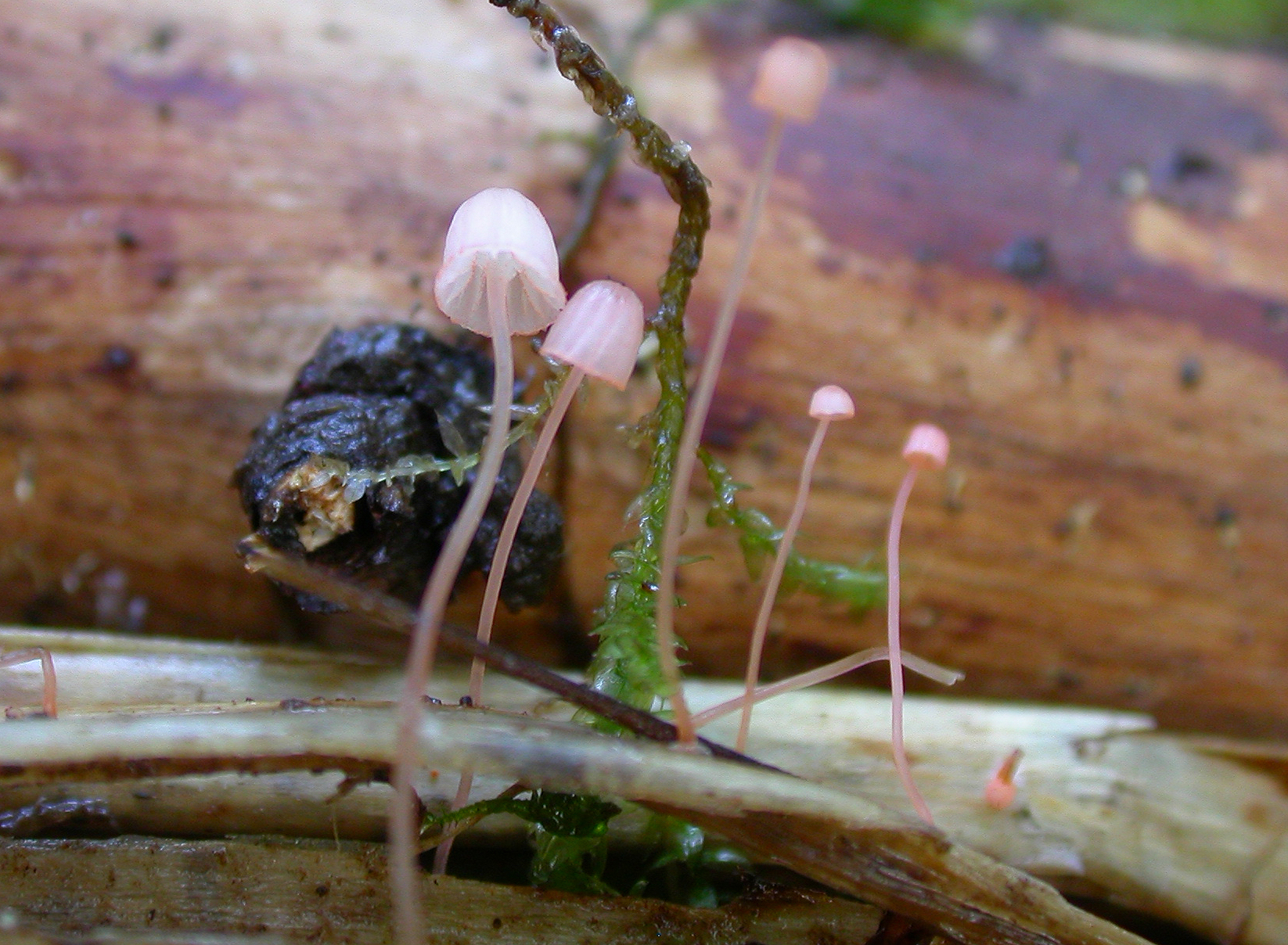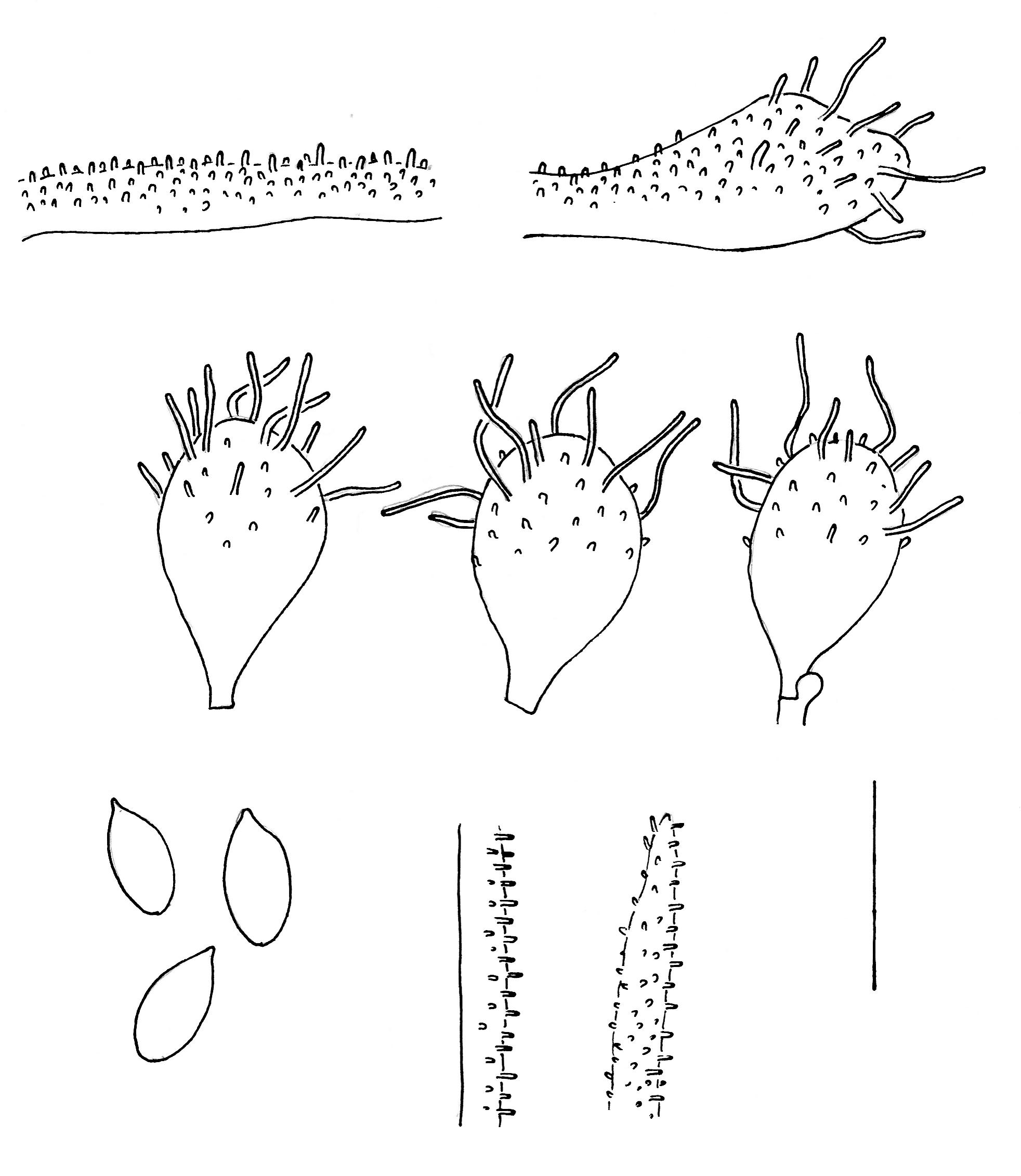Mycena pterigena
Mycena pterigena
- Innhold
- Description
- Ecology and distribution
Description
Hyphae of the pileipellis, cheilocystidia, spores and hyphae of the cortical layer of the stem.
Cap 1.5-3(-5) mm across, almost cylindrical to conical, slightly depressed, very shallowly sulcate, translucent-striate, pruinose, glabrescent, pale salmon to pale pink, sometimes very pale brown at the centre, beige to white at the margin. Gills 5-11 reaching the stem, broadly adnate, decurrent with a short tooth, pale salmon to white, the edge concave, orange red to pink. Stem 10- 30 x0.2-0.3 mm, cylindrical, equal, glabrous, at first black at the apex and grey down towards a pink base, then pink to whitish, the base somewhat bulbuous, attached with radiating, white fibrils. Odour none. Basidia 20-27 x 8-10 µm, broadly clavate, 4-spored. Spores (7.5-)9.5-12.5 x 4-5 µm, Q = 2-2.2, pip-shaped, amyloid. Cheilocystidia 20-40 x 7-20 µm, forming a sterile band, clavate to obpyriform, with reddish contents, covered with fairly numerous, simple, rarely furcate, cylindrical excrescences 2-13.5 x 0.5-1 µm. Pleurocystidia absent. Lamellar trama dextrinoid. Hyphae of the pileipellis 2-10 µm wide, densely covered with warts or short cylindrical excrescences 0.5-2 x 0.5 µm, terminated by cystidia at the margin of the cap, similar to the cheilocystidia. Hyphae of the cortical layer of the stem 2-5 µm wide, densely covered with simple, cylindrical excrescences 1-3 x 0.5-1 µm, the terminal cells not much inflated, densely diverticulate. Clamps abundant in all tissues.
Ecology and distribution
Scattered to gregarious on the decaying rachis of the fronds of diverse ferns. Summer to autumn. Rather common in all parts of Norway.

